 He's going to fight to the last second of the last minute of the last hour. 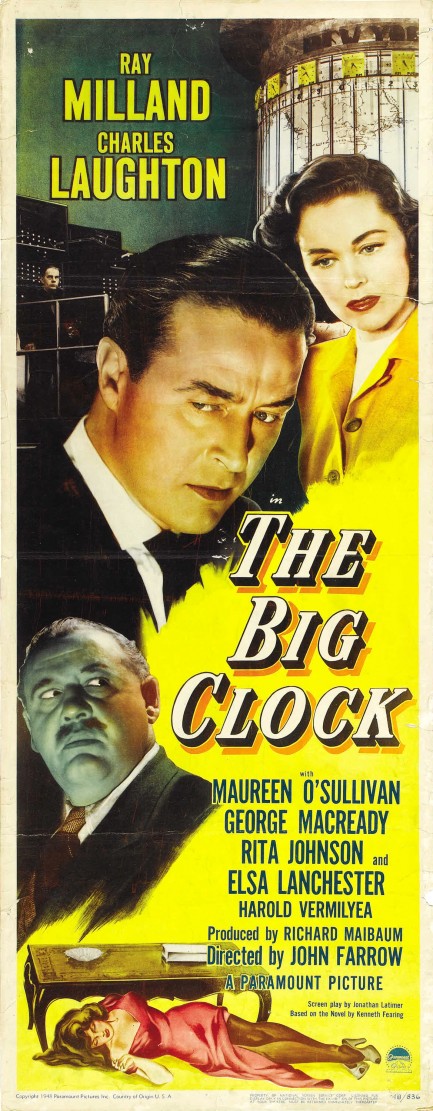
Above: an alternate promo poster for The Big Clock, a quirky film noir we looked at closely last year on this date. Quirky because it has comedy interwoven into the plot. But at its core the movie tells the dramatic tale of a man who's about to be blamed for a murder he didn't commit, but who has a desperate last chance to avoid his fate because he's also—in a classic noir twist—responsible for investigating the crime. It's definitely worth a watch. It premiered today in 1948.
 Time keeps on ticking ticking ticking into the future. 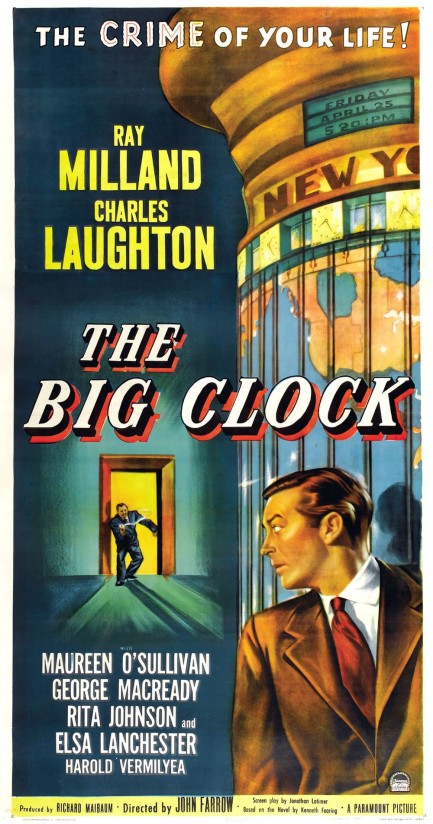
Above is a poster for the film noir The Big Clock, based on Kenneth Fearing's 1946 novel, with Ray Milland playing a journalist at fictional Crimeways magazine who finds himself entangled with the boss's girlfriend, then in murder when she turns up dead. He had nothing to do with it, but had been seen all over Manhattan with her the night of her death, and is presumed to be the killer though nobody has identified him yet. In classic film noir fashion, Milland's boss sets him to solving the case. But how can he, when he's actually looking for himself? And how can he throw his numerous staffers off the scent while appearing to conduct a legit investigation, yet somehow find the real killer? It's quite a mess.
For casual movie fans, distinguishing film noir from vintage drama can be difficult, but of its many defining characteristics, flag this one: the man who finds himself in a vise that slowly tightens due to what had seemed at first to be inconsequential or random acts. A painting Milland bought in an art shop becomes a potential piece of evidence against him. The cheap sundial he acquired in a bar does the same. The random man he exchanged a few words with becomes a potential witness. And so on. He's the subject of a puzzle that has his face in the center. Other characters are slowly assembling pieces from the edges inward. If Milland doesn't outwit them before they find the piece with his face on it, he's screwed.
In addition to an involving plot, nice technical values, Ray Milland, and a large clock, The Big Clock brings the legendary Charles Laughton to the party, along with Maureen O'Sullivan, a decade removed from her ingenue period playing Jane in Johnny Weissmuller's Tarzan movies, all grown up here as the smart, loyal, beautiful wife willing to come to Milland's aid when the chips are down. The film is unique, as well, for its interwoven comedy, unusual in films from this genre. These moments come often, and may seem obtrusive to some, but we thought they fit fine. And that's a good way to sum up The Big Clock. If you're a film noir fan, it'll fit you just fine. It premiered in the U.S. today in 1948.
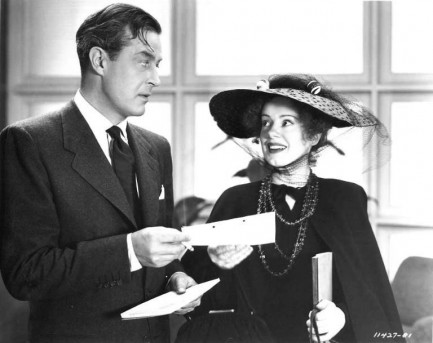 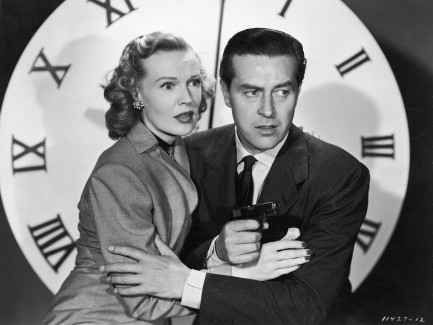 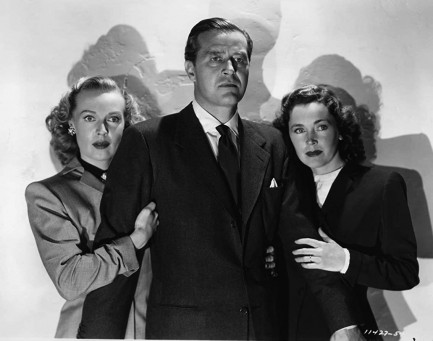 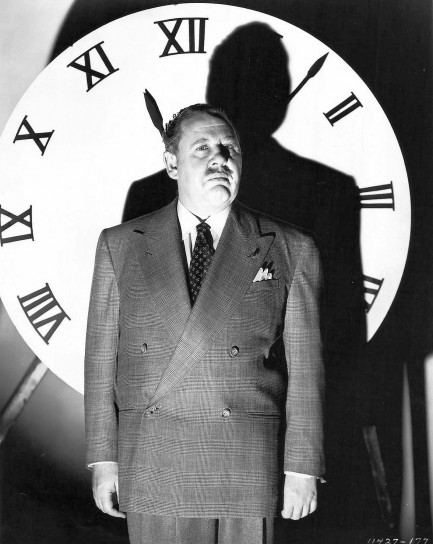 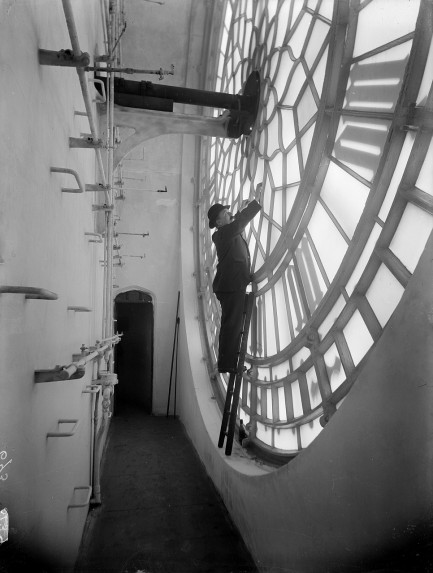 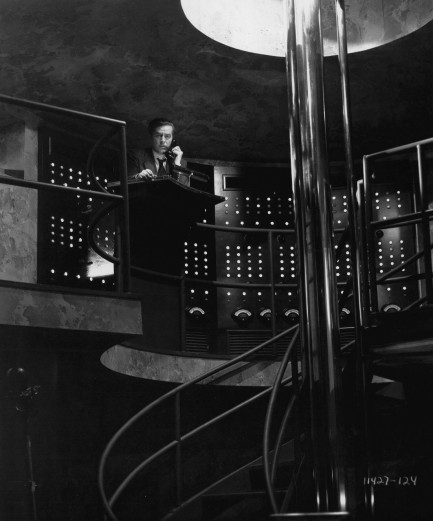 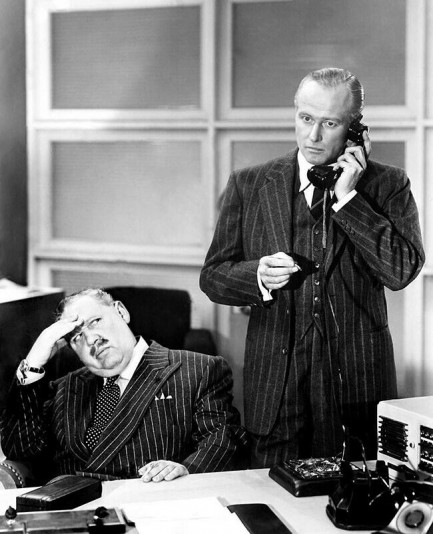 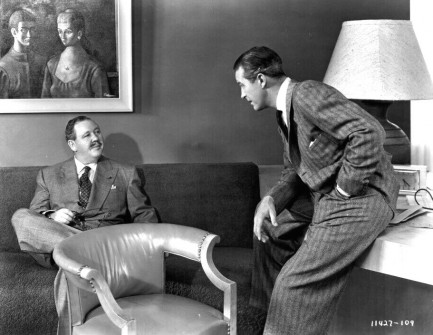
 No matter how far you run you can’t get away from yourself. 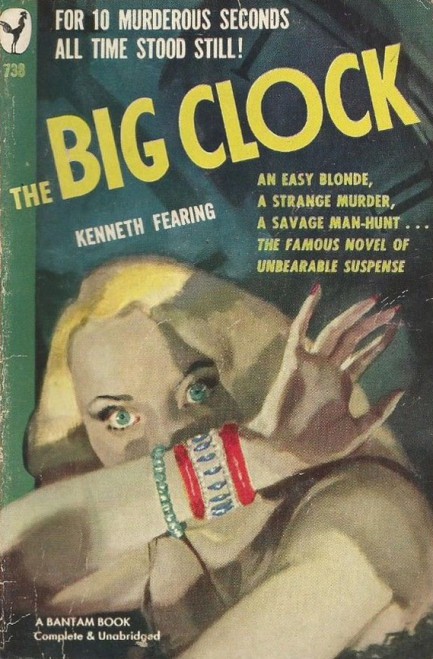
Above is a cover for one of the better pulp novels of the 1940s—Kenneth Fearing’s The Big Clock. An ambitious writer is tight with his powerful publisher/boss. One day he encounters his boss’s wife, drinks are had, chit-chat is made, and he spends the night with her. The next day he drops her off and the publisher happens to witness this, but doesn’t know the identity of the man he saw. When the wife winds up dead, the publisher seeks out a trusted confidant to find the mystery man who was the last person his wife was with before she died. He entrusts the task to the writer, and presto—you have a murder mystery in which the hero is forced by circumstance to search for himself. The novel appeared in 1946, an entertaining movie adaptation followed in 1948, and the Bantam paperback above came in 1949. Highly recommended.
|
 |

The headlines that mattered yesteryear.
1986—Otto Preminger Dies
Austro–Hungarian film director Otto Preminger, who directed such eternal classics as Laura, Anatomy of a Murder, Carmen Jones, The Man with the Golden Arm, and Stalag 17, and for his efforts earned a star on Hollywood's Walk of Fame, dies in New York City, aged 80, from cancer and Alzheimer's disease. 1998—James Earl Ray Dies
The convicted assassin of American civil rights leader Martin Luther King, Jr., petty criminal James Earl Ray, dies in prison of hepatitis aged 70, protesting his innocence as he had for decades. Members of the King family who supported Ray's fight to clear his name believed the U.S. Government had been involved in Dr. King's killing, but with Ray's death such questions became moot. 1912—Pravda Is Founded
The newspaper Pravda, or Truth, known as the voice of the Communist Party of the Soviet Union, begins publication in Saint Petersburg. It is one of the country's leading newspapers until 1991, when it is closed down by decree of then-President Boris Yeltsin. A number of other Pravdas appear afterward, including an internet site and a tabloid. 1983—Hitler's Diaries Found
The German magazine Der Stern claims that Adolf Hitler's diaries had been found in wreckage in East Germany. The magazine had paid 10 million German marks for the sixty small books, plus a volume about Rudolf Hess's flight to the United Kingdom, covering the period from 1932 to 1945. But the diaries are subsequently revealed to be fakes written by Konrad Kujau, a notorious Stuttgart forger. Both he and Stern journalist Gerd Heidemann go to trial in 1985 and are each sentenced to 42 months in prison. 1918—The Red Baron Is Shot Down
German WWI fighter ace Manfred von Richthofen, better known as The Red Baron, sustains a fatal wound while flying over Vaux sur Somme in France. Von Richthofen, shot through the heart, manages a hasty emergency landing before dying in the cockpit of his plane. His last word, according to one witness, is "Kaputt." The Red Baron was the most successful flying ace during the war, having shot down at least 80 enemy airplanes. 1964—Satellite Spreads Radioactivity
An American-made Transit satellite, which had been designed to track submarines, fails to reach orbit after launch and disperses its highly radioactive two pound plutonium power source over a wide area as it breaks up re-entering the atmosphere.
|

|
|

It's easy. We have an uploader that makes it a snap. Use it to submit your art, text, header, and subhead. Your post can be funny, serious, or anything in between, as long as it's vintage pulp. You'll get a byline and experience the fleeting pride of free authorship. We'll edit your post for typos, but the rest is up to you. Click here to give us your best shot.

|
|


















































































